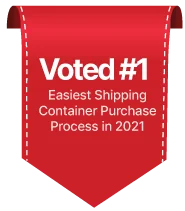Introduction to the things not to store in shipping containers
Here’s a list of things not to store in a shipping container: Electronics, Perishable items, Hazardous materials, and guns.
While these items are not dangerous, they should not be packed inside. The containers are not climate-controlled, so they can’t protect your electronics from the extreme heat or cold.
Portable air conditioners are fine to store in a shipping container, but guns and ammunition shouldn’t be packed inside. Ammunition can be unstable in hot weather, so don’t store it inside.
Perishable items
Perishable items require special handling during transport and storage. Proper cold-chain and hygiene regulations must be followed to ensure optimum preservation.
The use of special shipping containers is essential for keeping such items fresh. But what are the other considerations?
Here are some of the most important things to keep in mind when preparing a shipment of perishable items.
Firstly, the containers should be clean and free of moisture, dust, and microscopic organisms.
Perishable food should be shipped overnight since they deteriorate very quickly when exposed to extreme temperature and humidity. Perishable items include fresh vegetables, seafood, meat, and dairy products.
Make sure to label the containers and ship them in a temperature-controlled container. These containers should be sealed and sent overnight. This way, they can be kept fresh for as long as possible.
Moreover, the shipping container should be marked with the contents’ expiration date.
Secondly, the containers should not contain perishable items. While shipping containers are designed to provide safe storage for household items, not all of them are appropriate for storage.
The storage period can lead to spoilage or damage to the belongings inside. That’s why you shouldn’t store fresh fruits and vegetables in them.
Fresh produce, frozen foods, and refrigerated food containers are the most common types of perishable items that should not be stored in shipping containers.
Another reason why perishable items should never be stored in shipping containers is that they can be contaminated by hazardous substances, which are dangerous for the cargo team.
Additionally, perishable items can attract bugs, spoil other goods and attract unwanted pests. You may want to pack perishable items in a separate shipping container if they are needed for an extended period of time.
If you have these concerns, consider hiring a storage container rental service instead. Kentucky, Kansas, and Utah have many services like this.
When it comes to moving, perishable foods are not suitable for storage in shipping containers.
Perishable items are more susceptible to mold and mildew, and if you pack unopened food inside, you might end up with a spoiled shipment.
Nonperishable items can be packed in shipping containers, including canned goods, rice, pasta, and unopened sauces.
If your shipment is going a long distance, you can donate canned corn or other food to a local food bank in your new town.
While shipping containers can enhance your emergency preparedness plans, they are not suitable for storing perishable items. For example, gasoline is highly flammable and can cause disastrous effects if a spill occurs.
In addition, cleaning chemicals shouldn’t be stored near sensitive items. They can cause a chemical reaction, ruining the items inside. Further, clean-up can be a tricky process.
Therefore, you should consider storing backup items in shipping containers.
Hazardous materials
When storing hazardous materials, you must pay special attention to the labeling. The information provided on the label tells users about important hazards, such as the possibility that the substance will explode or burn.
Some of the labels provide even more detailed information. In case of an emergency, you need to know what to do to avoid causing further harm to people.
The information is also essential to ensure the safety of your workers around hazardous materials.
The MSDS should contain the appropriate storage conditions. Hazardous materials should never be stored together, as they can become dangerous when mixed or mishandled.
Other materials should also be stored in the proper manner to prevent them from harming others. Listed conditions should be observed for storing hazardous materials.
For example, flammable liquids and oxidizing agents should not be stored in the same shipping container. In addition, the container should be kept at room temperature, preferably below 35 degrees Celsius.
While flammable liquids cannot be stored in shipping containers, other containers can be used. Glass containers can hold up to one pint of Class IA liquid and one gallon of Class II liquid.
Although these containers may not meet size requirements, they must still comply with U.S. Department of Transportation guidelines.
If you are in doubt about what containers are appropriate for your materials, contact the U.S. Department of Transportation (DOT).
When shipping hazardous cargo, make sure to pack them securely. They must arrive at their destination in good condition.
Since hazardous materials are sensitive to changes in temperature and humidity, they must be packaged in water or air-tight containers. Labeling is crucial as hazardous materials should be clearly visible.
If the outer packaging has a label that isn’t needed, remove it. If a label has to be removed, consider whether the container can safely store the cargo.
While some materials may not be classified as hazardous, they are still dangerous. Even when properly contained, they can cause a chemical reaction that overwhelms adequate precautions.
To protect yourself from these chemicals, use protective gear. Avoid smoking, sparking tools, or anything else that could ignite a hazardous substance. If you can’t avoid exposure to hazardous materials, don’t enter.
Taking safety precautions is always best.
If the workplace contains hazardous materials, it’s essential to train your employees to recognize the risks of each chemical and understand the precautions needed.
For instance, an employee handling 55-gallon drums should be trained differently than a production worker. Moreover, hazard-prone materials can arrive in one-ounce bottles or 30,000-gallon bulk tanker loads.
Most of the time, workers are moving hazardous materials from one container to another. And because the containers are often moved from one to another, the contents can leak or drip.
Electronics
Whether you’re delivering large appliances, a single cell phone, or an expensive computer, there are a few things you should know before shipping electronic devices.
Even if they’re labeled “fragile,” these items can still be damaged during transport. You should know the most important precautions when shipping these items.
If you’re shipping an expensive piece of equipment, read on for eight essential considerations.
If you’re storing an electronic device, try to keep it in its original packaging to prevent warping surfaces. This is especially important for large-screen TVs, which can be easily cracked if improperly packed.
Record the current configuration and settings, and make sure all cords are properly positioned.
If possible, record a video of the electronics being unplugged so that you’ll know exactly what they look like once they’re in the shipping container.
Another factor to consider is the humidity level. Many electronics don’t like humidity and should be stored in climate-controlled storage units.
You can find a climate-controlled storage facility by asking the company about its humidity policy. If possible, invest in desiccants to protect your electronics from excessive moisture.
It’s also a good idea to avoid storing electronics too close to each other. This will generate additional heat, making it impossible to store everything in a shipping container.
Batteries are a big concern when storing electronics for long periods of time. Even if you can reuse the batteries, they can leech and destroy the electronics.
Also, batteries don’t mix well with long-term storage, so make sure to recycle old batteries before storing them. If you’re transporting these items overseas, you should check for customs regulations.
Then, enclose the electronics in specially-designed boxes to protect them from damage.
Another concern is storing lithium-ion batteries in a shipping container. These batteries are much more powerful than regular dry cells, so lithium-ion batteries should be removed before shipping them.
Batteries should be packed separately and wrapped in non-conductive materials to keep exposed terminals safe.
Lastly, guns and ammunition are not safe to store in shipping containers. Ammunition may become unstable in hot weather.
You can take precautions to protect them by using bands and other methods to keep them securely in place in the shipping container.
Besides safety concerns, another important consideration is temperature. Cold temperatures can damage electronics and can lead to battery problems. In addition, they can cause cracks and ice crystals to form.
So, if possible, it’s best to store electronics in their original packaging, such as their original boxes. However, it’s important to make sure that your electronics are securely packed before shipping.
You can use pallets and other furniture to create a barrier against the floor. It's also important to note that stacking boxes too high may cause stability issues.






 147 People have requested shipping container pricing this week through TheShip
147 People have requested shipping container pricing this week through TheShip